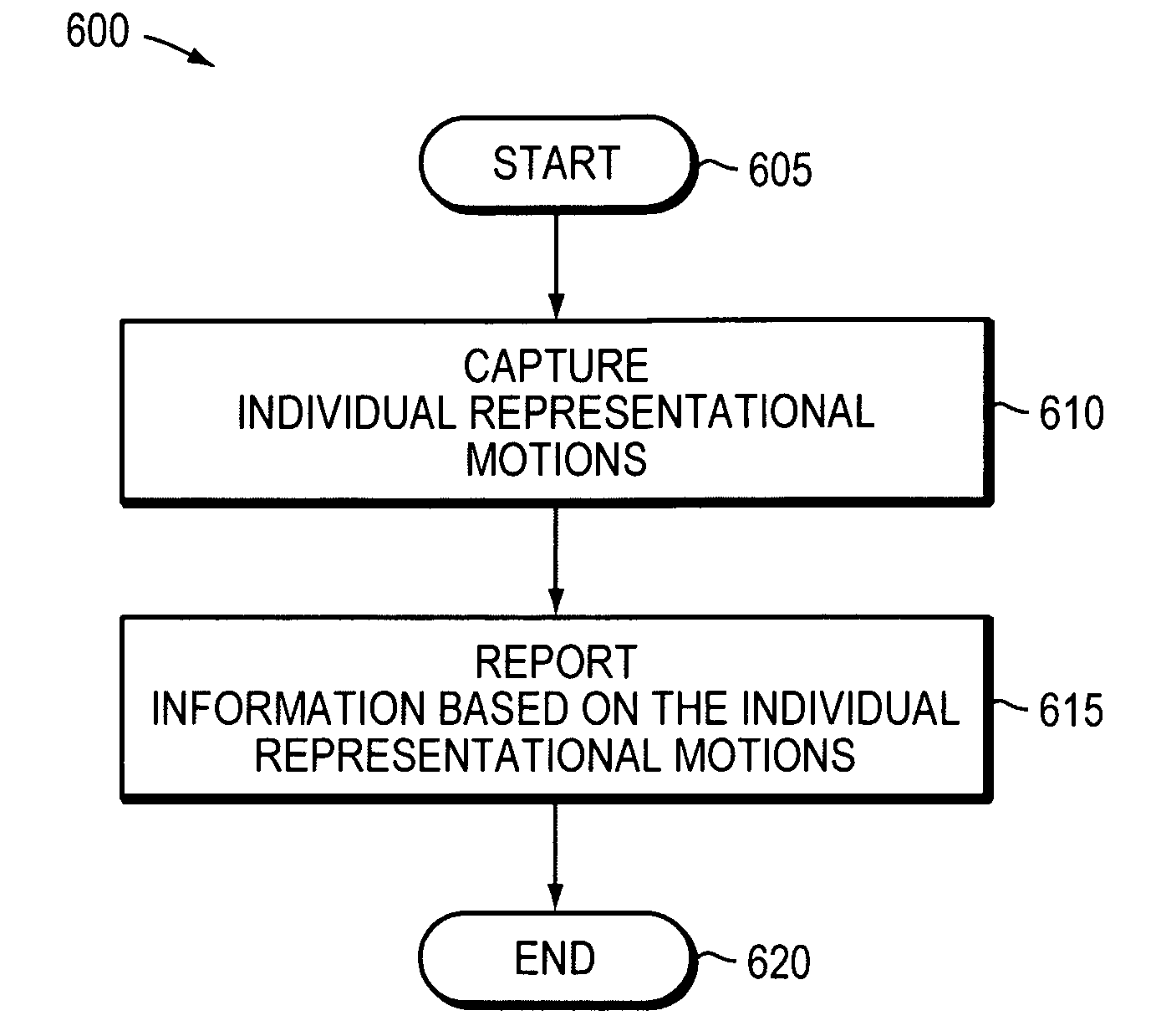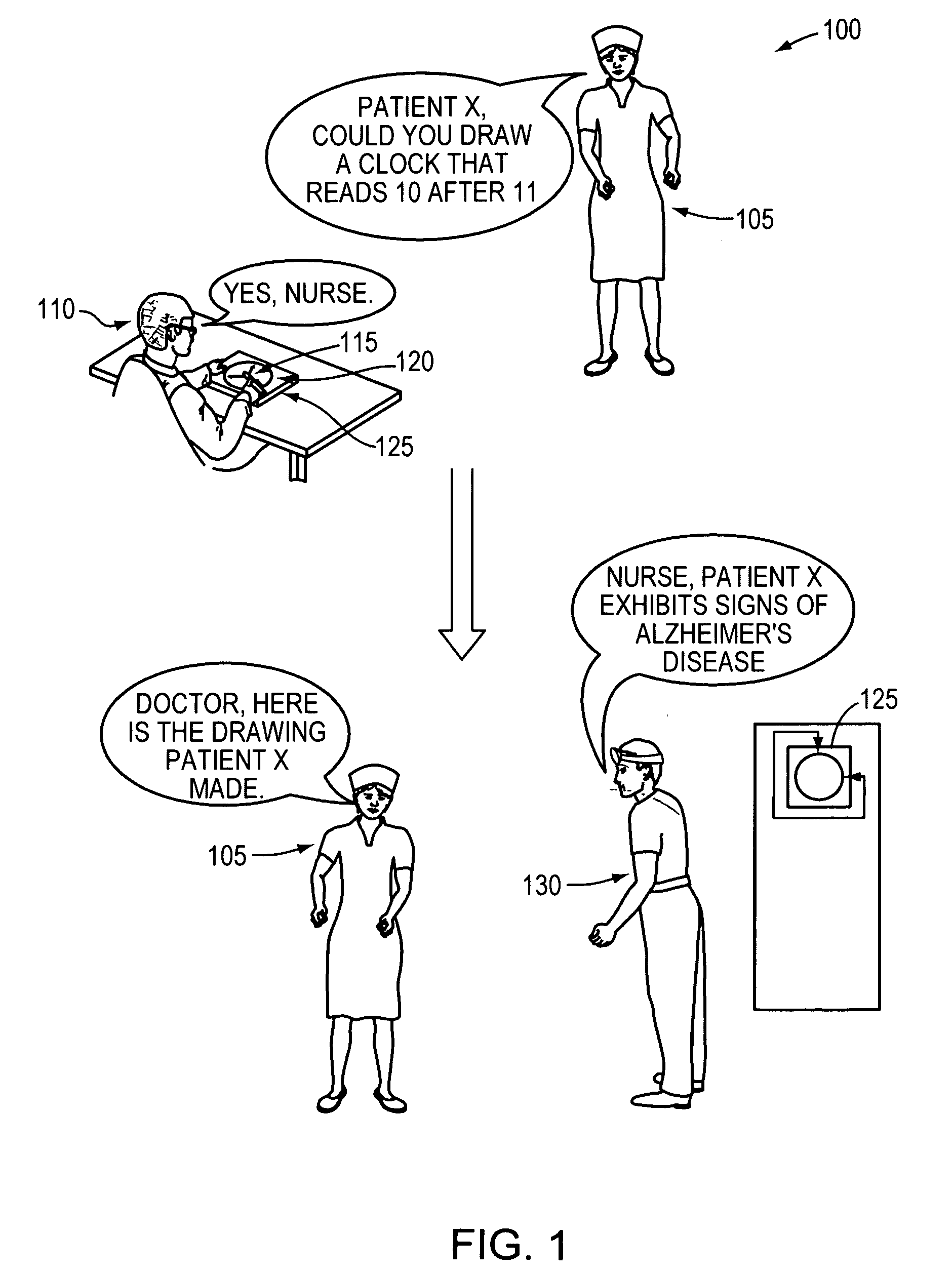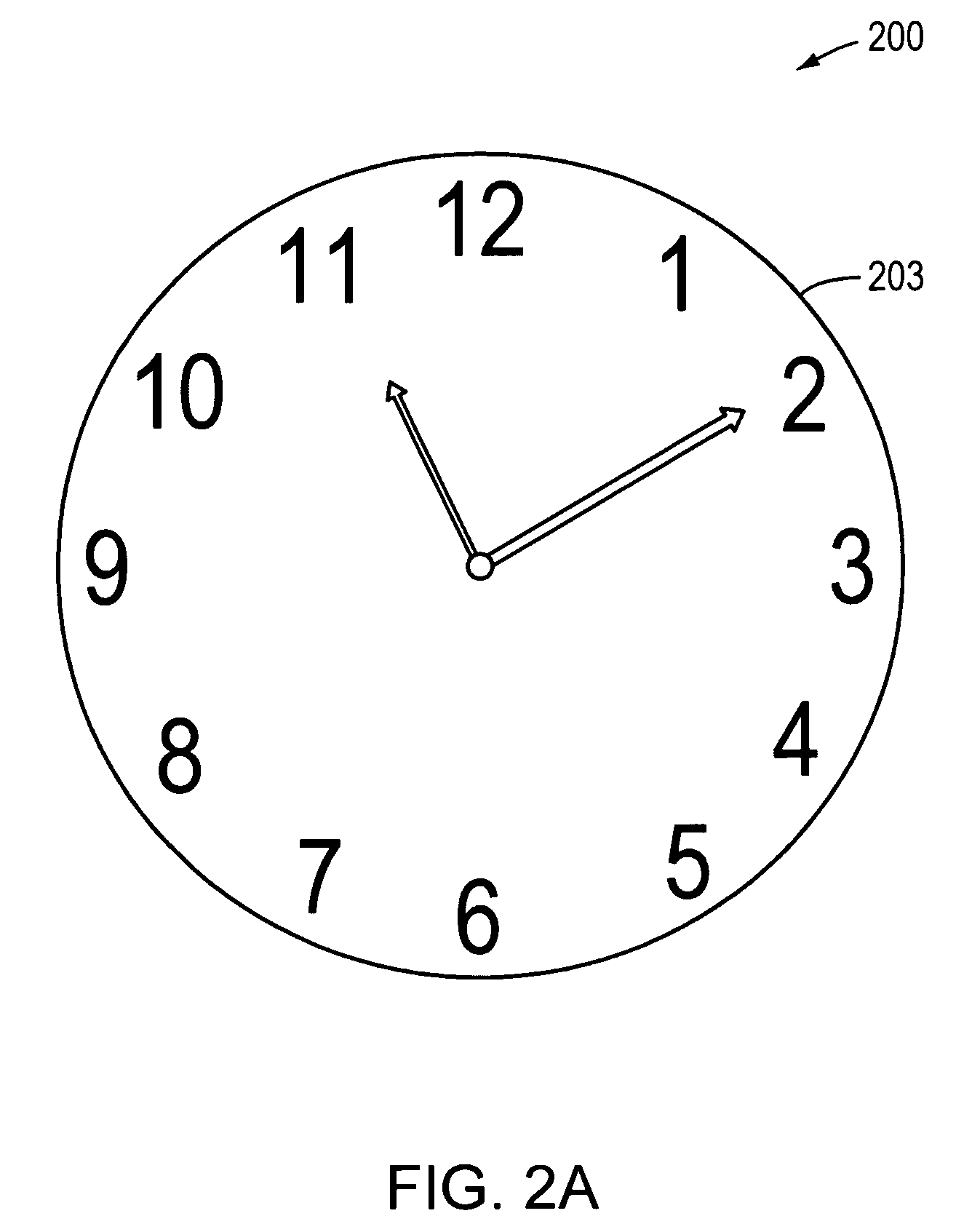Method and apparatus for measuring representational motions in a medical context
a technology of representational motion and medical context, applied in the direction of instruments, applications, person identification, etc., can solve the problems of material modification of the test, the loss of substantive process data useful in assessing the cognitive condition of the patient, and the reproducibility of test settings and standardization of test scores
- Summary
- Abstract
- Description
- Claims
- Application Information
AI Technical Summary
Benefits of technology
Problems solved by technology
Method used
Image
Examples
Embodiment Construction
[0069]A description of example embodiments of the invention follows.
[0070]A Clock Drawing Test (CDT) may be used to evaluate neurocognitive processes that are important in a variety of medical conditions, such as dementia, by a health care professional because the CDT may allow an examiner to observe cognitive mechanisms and dysfunctions of a person based upon the person's performance. Morris Freedman et. al., Clock Drawing: A Neuropsychological Analysis 44 (Oxford University Press, Inc. 1994). The CDT may also be used to examine numerous conditions that includes, but is not limited to other dementias and a spectrum of neurological disorders, such as “metabolic encephalopathy, traumatic brain injury, and disconnection syndromes.” Id. at 77. The CDT has been used to test visuoconstructive, visuospatial, visuomotor, visuoperceptual, or auditory processing functions or abilities of a person. Id. at 3-5. The CDT has three conditions, which are: (i) clock drawing, (ii) clock setting, and...
PUM
 Login to View More
Login to View More Abstract
Description
Claims
Application Information
 Login to View More
Login to View More - R&D
- Intellectual Property
- Life Sciences
- Materials
- Tech Scout
- Unparalleled Data Quality
- Higher Quality Content
- 60% Fewer Hallucinations
Browse by: Latest US Patents, China's latest patents, Technical Efficacy Thesaurus, Application Domain, Technology Topic, Popular Technical Reports.
© 2025 PatSnap. All rights reserved.Legal|Privacy policy|Modern Slavery Act Transparency Statement|Sitemap|About US| Contact US: help@patsnap.com



